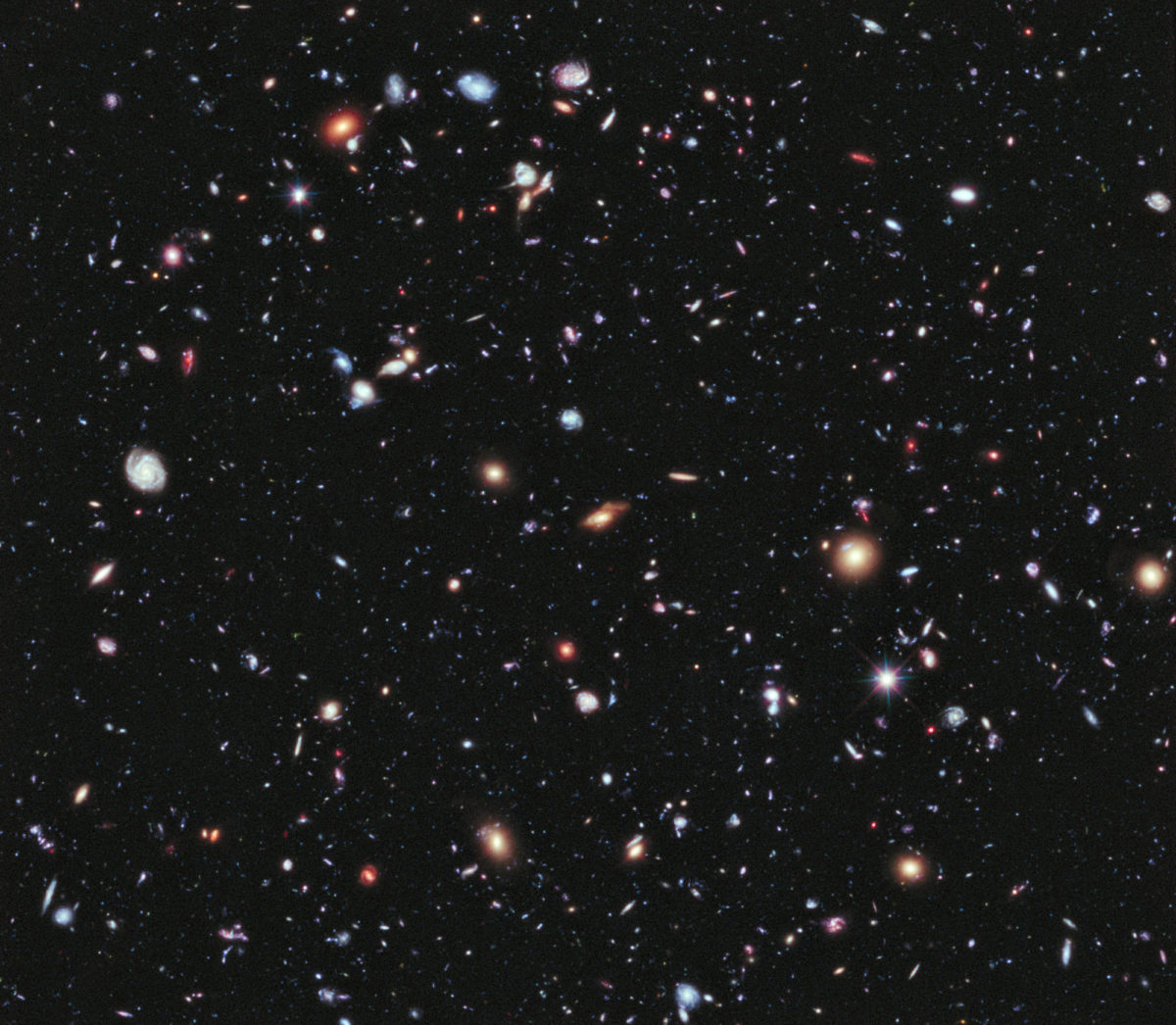Mat Kaplan • Oct 09, 2012
Exploring the XDF: The Hubble eXtreme Deep Field
Sometimes Radio Just Isn't Enough!
Don't get me wrong. No one loves radio (and podcasting) more than me. But sometimes you have to see a picture to believe it. That's the case with the XDF, a mind-bending and spectacular image released on September 25 by the Space Telescope Science Institute.
You've probably seen the UDF or Ultra Deep Field. It has become one of the most popular astronomical images of all time. I have it hanging behind my desk. I know a member of the US House of Representatives who has it mounted on the wall of his office. Basically, astronomers pointed the Hubble Space Telescope (HST) at one tiny patch of sky for a long time, revealing thousands of galaxies that stretch back through most of the history of our universe.
But the data for the UDF was gathered in 2003 and 2004. The Hubble has been upgraded since then, primarily with the addition of the Wide Field Camera 3 during the 2009 servicing mission. This gave the HST unprecedented infrared observing power. That's particularly useful when you want to look into the distant past, as the inevitable "red shift" of light from early galaxies moves them out of the visible light range.
Garth Illingworth realized it was time to upgrade the UDF. The UC Santa Cruz Professor of Astronomy and Astrophysics is also an astronomer at the UC's famous Lick Observatory, and he has a long history with the Hubble. He served as Deputy Director of the Space Telescope Science Institute in the mid-80s.
Garth and an international team began gathering data collected over ten years of observations by the Hubble. They focused on an even smaller section of the sky than the UDF, a patch that is roughly one tenth the apparent size of the moon. Many months were spent refining and combining more than 2,000 individual images, representing more than 20 days or about 2 million seconds of exposures.
The result is magnificent. It contains roughly 5,500 galaxies of every shape, size and age. The earliest of these is seen as it was 13.2 billion years ago. That's just a half-billion years after the Big Bang. Many of these starry communities are great spirals like Andromeda or our own Milky Way. Others are ancient ellipticals, full of aged red stars.

The XDF is a terrific achievement, but it's not the end of the line. As he told me in a Planetary Radio interview, Garth is very excited about the James Webb Space Telescope, the much bigger instrument that should be launched in 2018. The JWST isn't just bigger. It is optimized for infrared observations that will take us even closer to our universe's explosive beginning.
Garth and his colleagues have created an XDF Project website with lots of background info, images and videos, including an animation that flies you through the XDF. I highly recommend a visit, but first, listen to my fascinating conversation with Garth Illingworth.
Support our core enterprises
Your support powers our mission to explore worlds, find life, and defend Earth. You make all the difference when you make a gift. Give today!
Donate

 Explore Worlds
Explore Worlds Find Life
Find Life Defend Earth
Defend Earth

